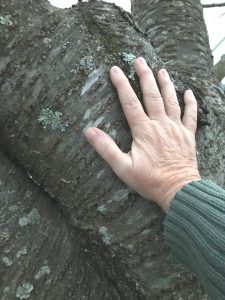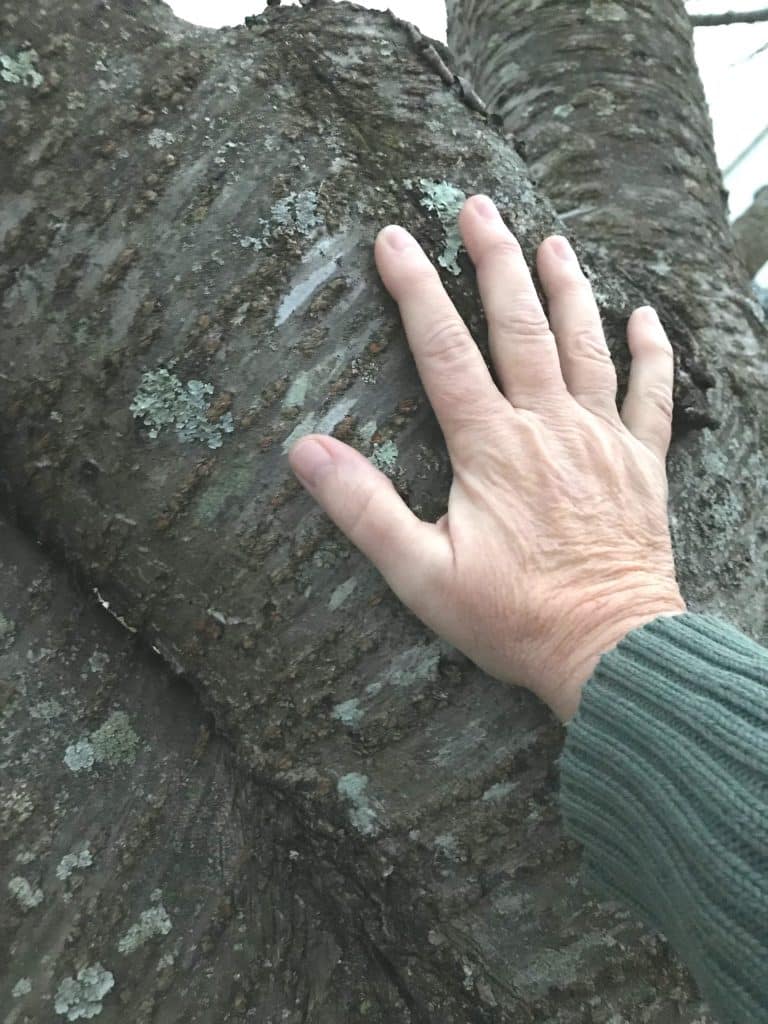 Three-Centered Awareness is a pathway to be more awake, aware and present. The goal is to be balanced within oneself and allow all of one’s inherent resources to be available. The concept was taught by G. I. Gurdjieff (1866-1949), who described the path as The Fourth Way. Gurdjieff traveled extensively through Asia, the Middle East and Eastern Europe learning the wisdom of the three spiritual paths taught by the monks, fakirs and yogis focusing on emotions, the body and the mind respectively. The Fourth Way incorporates all three paths in a balanced way, allowing for inner development and transformation.
Three-Centered Awareness is a pathway to be more awake, aware and present. The goal is to be balanced within oneself and allow all of one’s inherent resources to be available. The concept was taught by G. I. Gurdjieff (1866-1949), who described the path as The Fourth Way. Gurdjieff traveled extensively through Asia, the Middle East and Eastern Europe learning the wisdom of the three spiritual paths taught by the monks, fakirs and yogis focusing on emotions, the body and the mind respectively. The Fourth Way incorporates all three paths in a balanced way, allowing for inner development and transformation.
What follows is a simplified version of Three-Centered Awareness that I learned this fall during a course taught by Cynthia Bourgeault.
Gurdjieff taught that we, as human beings, have three centers of awareness within us. They are:
The Intellectual Center
The Moving Center or Body
The Heart Center or Emotional Center
The Intellectual Center is our mind and the way we process reality. It is a clearing house that sorts what our senses present. It is an evaluation center, a separating center, and a measuring center. The Intellectual Center is necessary, especially for children as they learn right and wrong behaviors, how to cross the street, how to play in groups, and how to be safe. The Intellectual Center allows us to master reading, writing and arithmetic, progressing into more complex fields. Logic and truth are at home in the Intellectual Center.
We can have knowledge without empathy and understanding. As we get older, we see life is complicated. Absolute truths do not apply or exist for every situation. The Intellectual Center can be dualistic and dismissive when left unchecked. Take the refugee situation at the U.S.’s southern border. We can build a wall and keep everyone out, or we can open the borders for anyone who wants to come in. Those ideas are examples of dualistic, (either-or) thinking. In reality, there are many other options to address the refugee crisis in America. Being balanced in the Intellectual Center requires a bit of humility and reverence for the information or situation at hand.
Spending too much uninterrupted time in the Intellectual Center can lead to an imbalance in your total system. School systems know that children (and teachers) need programmed breaks from the academic learning. Recess time allows children to run around, engaging their Moving Center. Art and music classes allow children to engage their creative energy which is a combination of Heart Center and Moving Center.
The Moving Center is intelligence through movement; our body’s natural intelligence and ability to do and sense things that the mind is not micromanaging. For example, the ability to ride a bicycle, walk, sing, knit, or play an instrument. Consider the tempo of music and the natural way your body starts to resonate. Have you seen a toddler instinctively start dancing to music? Gestures are part of the Moving Center and our bodies understand what open arms or Namaste posture communicate.
Many of us have internalized negative messages that might block our ability to fully inhabit our bodies and experience the wide array of sensations or activities available to us. Be fully present the next time you enjoy a meal, a shower, a massage, a cool breeze, a warm embrace, a dance, or a swim. Last winter I went skiing for the first time in over 35 years. As I exited the chair lift at the top, I gingerly started down the mountain, slowly skiing from side to side with little descent. My adult daughter was with me. I hadn’t been skiing since long before she was born. Within a few minutes I was feeling my oats, picking up speed, and spraying snow at her as I came to a sharp stop inches from her, beaming brightly. Sometimes our bodies just know how to do things when our mind (or society) tells us we’re too old to try. I was fully inhabiting my body that day.
The Heart Center is intelligence from within oneself that matches the resonance of others or the environment in which you are in. This may sound strange but let me explain further. It is not emotions. It is a way of knowing things without words. For example, knowing someone you care about is hurting without any obvious way of knowing it. Or coming upon a landscape and knowing the beauty or terror of the place. It is not fear or happiness (emotions), it is knowing. The Heart Center can be blocked when our relationships have feelings of anger, jealousy, resentment, clinging, lust, and possessiveness. The goal is to be “open” to another person, animal, or environment, without our inner drama or story clouding the Heart Center.
Both my daughters seem to be in the same wavelength as me. I cannot count the number of times I have received a phone call or text from one or both during a day when things were not going well. They had no way of knowing, but they both reached out to me. Their heart center was fully active. I have had the same relationship with others, though separated by many miles and years. I recently had a dream about a high school friend I haven’t seen or spoken with in over 10 years. In the dream we were sitting together at a funeral, but it wasn’t clear whose funeral it was. I contacted her the following week and learned her brother had died. We had been so close 40 years ago. That bond is real. The invisible conduit between us was still functioning.
If you want to develop this bond with another person, the first step is to get your drama out of the way. Love them without judgement. Picture them. Imagine you are sending them your hopes for happiness, comfort, rest, peace, joy, success (whatever good thing you wish for them). Imagine you are sending these intentions to them via an invisible conduit. Send your intentions often and keep your drama out of it. This is what I have found works best.
Three-Centered Awareness
Three-Centered Awareness is achieved by being balanced in all three centers and then flowing between them. How do you do this? Start by identifying your primary operating center, which for most of us in Western cultures is the Intellectual Center. Learn to bring the other two centers into the flow.. This tradition teaches that when you are only operating from one center, you are asleep. The goal is to wake up and be centered.
Say you are obsessing about an upcoming appointment. Your thoughts may go around and around for days regarding this future happening. When you catch yourself in this moment, bring your Moving Center into action by wiggling your toes or focusing on your breath or rubbing your hands together. Feel your hands. Feel the warmth. Enjoy the sensation for at least 10-15 seconds in order to break out of the Intellectual Center. It is a way to change the channel and become aware of your body. You can also incorporate daily practices like exercise, walking, raking leaves, chopping vegetables, knitting or playing an instrument into your routine. The key is to be fully present in your body as you experience the activity. If you are often connected to earbuds, purposely make time to turn off the input so your Intellectual Center can move off center stage and the other centers can be balanced.
Bringing the Heart Center into the flow takes time, but it is worth the effort. You can start with your plants or your garden. Have you ever talked to your plants or flowers? I have a miniature cherry tree in my front yard. I love this tree, especially the shade and privacy it provides to my bedroom windows. I enjoy raking the leaves in the fall. In the spring the flowers are spectacular. I often sit on the front steps of my house and look at the tree, but I’ve never talked to the tree until recently. Now I take time to touch it and thank it for the gifts if gives me. The tree is alive, and I hope it can sense my presence.
My new Nursery calling affords me time each week with several pre-verbal children. Words are not useful as I try to develop my relationship with them. What helps is spending time together, speaking softly, singing together, acting out song lyrics, making eye contact and communicating that I care about them. Last Sunday a little girl ran into the room, straight over to me and hugged me. I knew that the past few weeks of being together had resonated with her.
The relationship between The Father, Son and Holy Ghost has been described as a watermill with a series of buckets that fill with water, empty into the next bucket, which fills and empties into the next bucket etc. This metaphor works well for Three-Centered Awareness also. Imagine that one bucket is the Intellectual Center and the next the Moving Center and the next the Heart Center. In order for the mill to function properly, water needs to move between the buckets, turning the wheel in a constant flow of energy. We can achieve this by balancing Moving Time and Heart Time with Intellectual Time. Spending time in your Moving Center, (hiking, skiing, picking apples) can recharge that part of your system. Having an extended meditation session can also re-balance your Heart Center. Sometimes a few minutes a day is all you need. Once you start this practice you will instinctively know what you need. You will crave it.
Another metaphor: Imagine the original Star Trek series. Spock represents the Intellectual Center. Scotty represents the Moving Center and the mechanics of the Enterprise. McCoy cares for the Heart Center of the ship–the crew, (Star Trek: The Next Generation beefed up the Heart Center with Deanna Troi’s role). Captain Kirk must use the information from all three sources in order to command the Enterprise effectively.
Jesus is a great example of someone who was fully present and balanced. I particularly like the stories where Jesus beheld people, such as the rich young man, or the woman at the well, or the man in the tree or his mother and John at the foot of the Cross. Jesus was centered, and thus able to behold others. That is the goal. We all want to be fully known, at least by a few people. In return it is wonderful to offer our wide-awake presence to others and our world as we journey on through life.
Discussion questions:
What is your experience with Three-Centered Awareness? Is this a new concept to you?
Can you share an example of catching yourself stuck in one center and finding balance with the others?
What activities do you participate in that help you feel balanced?
Do you feel connected to someone or a place at a deep heart level?




One Response
In education circles, we talk about three other ways to learn: through the eyes, the ears and the moving body. Most teachers are women, and most of them teach by talking, forcing children to learn through hearing. Some incorporate the eyes, writing on the board, showing power points with pictures or drawings, allowing children to learn visually. Few teach physically, yet that is the method of learning that children are most attuned to, especially young children.
I taught reading to a third grader who would act out each vocabulary word, making shapes with her body or improvising motions. In a high school US history class I taught, I introduced political cartoons and asked students to devise cartoons to show what we were studying. A few kids started participating in class who had never really participated before, drawing insightful cartoons on the board.